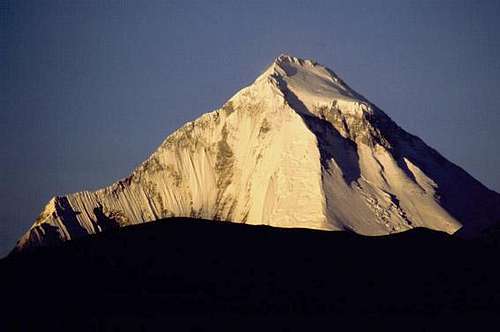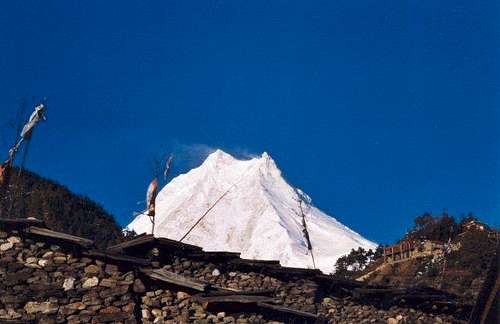This past fall Backcountry.com sponsored a trip by Steve Su and Pete Takeda to attempt peak 6890 in the Karakorum of Pakistan. For Steve, this was a year of major climbing accomplishments, including one day ascents of Supercanaleta on Fitzroy, the Frendo Spur, and the North Face of the Eiger. If you haven't heard of Steve it's because he's a normal guy living in Boulder raising a family and working as a computer programmer. But when he ties into a rope, watch out- he's virtually unstoppable. Plenty of people you have heard of can't keep up with him. Pete's no slouch either. Enough spray about Steve- here's the story...
6890 in the Karakorum of Pakistan. For Steve, this was a year of major climbing accomplishments, including one day ascents of Supercanaleta on Fitzroy, the Frendo Spur, and the North Face of the Eiger. If you haven't heard of Steve it's because he's a normal guy living in Boulder raising a family and working as a computer programmer. But when he ties into a rope, watch out- he's virtually unstoppable. Plenty of people you have heard of can't keep up with him. Pete's no slouch either. Enough spray about Steve- here's the story...Upon arriving to base camp summer like conditions gave way to fall. Temps were no longer warm enough to melt new snowfall and the mountains were starting to show their winter coats. We would have 20 or so days of fickle weather with on and off snow showers before a significant weather window arrived.

The mountain we chose to climb is peak 6890 in the Karakorum mountains of Pakistan, approximately 70 miles west of K2. This is a seldom visited area compared to the peaks along the Baltoro glacier. Peak 6890 is majestic peak with a steep rocky south face crowned with Peruvian-like snow flutings.
There is no easy route up this peak. The route we chose was the prominent south ridge. By quick observation it is an inviting line until you follow it to the summit slope where the ridge abuts a huge ice cliff. It is the kind of thing that you would never know if it was passable or worth passing due to objective hazards until you where standing right there.

After some debate, we decided we would throw ourselves at it with 5-6 days worth of supplies.
The ClimbingDay one on the route started off with climbing a 1500 ft couloir which takes us to a 1000 ft rock wall.
This was the first big obstacle of the route. Much of the lower wall was slabby and sparse on features. We should have guessed this due to all the water streak marks covering the wall. By the end of the day and into the night we were half way up the wall. With no p

lace to set up a tent, we each chopped a ledge to sleep on and called it good for our first night out.
The next day we topped out on the rock wall
and were now on the south ridge. It was a relief to be on easier terrain again, 60 degree snow slopes. However, on the third day the snowy ridge gave way to the next big obstacle, a 2000 foot section of exposed rock.
While scoping out the route previously, we predicted that this would be the most difficult part of the climb. The climbing proved to be fairly complicated, mixed, off-width, ai

d and finger crack climbing all in the opening pitch. The 3rd and 4th days brought intermittent snow squalls and slowed progress.
We only managed 1000 feet of climbing during these two days and were forced to another open bivy. This time the bivy was not so pleasant with the wind swirling snow into our faces.
By the fifth day time was running out and we still had a ways to go. We kept cracking away at the technical terrain but were just not fast enough.
At this point, we finished up a section called the black fin

where the ridge narrows down so that you can just about straddle the ridge giving you a feeling of really hanging it out there. By this time it was dark and cold, and the terrain was more convoluted. I lead out in hopes of finding a bivy spot but hit a dead end and had to retrace my pitch. It probably took several hours before we could find a reasonable place to bivy.
Pete meanwhile was going numb from the cold while belaying me and could not wait several hours more for me to climb the next pitch. There was nowhere to bivy except down. This meant that the climb was over.
We couldn't reclimb the technical terrain again with our limited supplies. We had climbed about 4500 feet and still had another 3500 feet to the summit. And that’s how the cookie crumbled.
Steve Su
Labels: Climbing, Mountaineering































